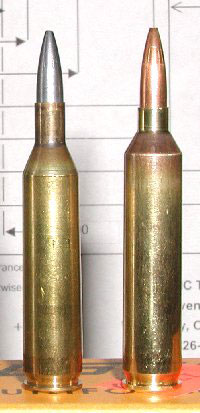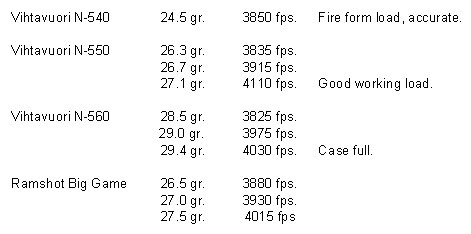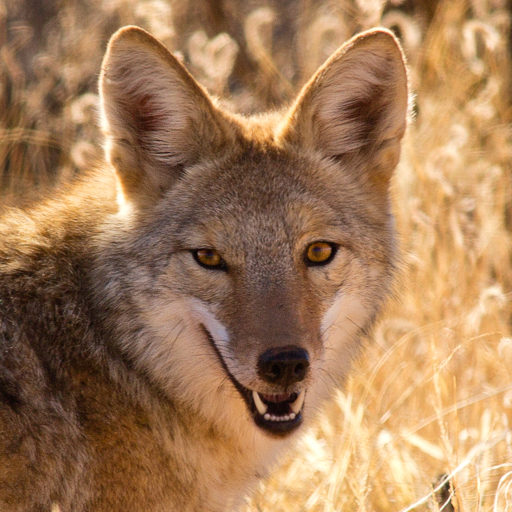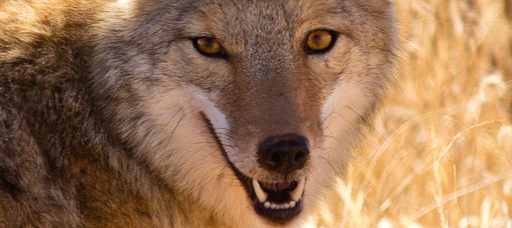The 17 Predator
by Dan Clements
The year was 1980, and I had been playing with my first 17 for a few weeks. It was a nice little factory Remington that wore a Leupold 16X scope, and I had dispatched quite a few prairie rats and jack rabbits with it. The effectiveness of the tiny bullet was amazing, but how would it handle this huge badger I now had in my crosshairs? Now, badgers are tough, high octane animals that can be hard to put down quickly, but I needn’t have worried. The Hornady 25 grain bullet took him square in the chest, and he simply dropped his head, stone dead. On closer inspection, I could not even find an entrance hole. After many more similar experiences, I would learn that this was typical .17 caliber performance, and thus began my fascination with small calibers that flourishes still today. Since that first .17 I’ve enjoyed various 19 and 20 caliber cartridges and they are all wonderfully fun and useful, but the 17 calibers have always held a special allure that is impossible to ignore.
When I had that first Remington I was limited to either the factory Remington bullet or the Hornady. Both good bullets, but not what you would call much of a variety. Today, the situation has changed drastically for the better. There is an almost unbelievable selection of top quality 17 bullets from Hornady, Berger, Calhoon, Starke, the Woodchuck Den and others, many of which are TVHM advertisers. The 28 grain Calhoon, 30 grain Berger, and the new Woodchuck Den 27, 29 and 30 grain Gold boat tails have extended the useful range of the 17 dramatically. In fact, it is this new generation of heavy 17 bullets that led me to the development of the 17 Predator cartridge.
My goal was pretty simple. As it’s name suggests, the 17 Predator is primarily a coyote thumper. I wanted to drive the heavy, high BC 17 bullets as fast as practical for those long shots. 4000+ fps was my goal with the 29 and 30 grain bullets. I mostly hunt in pretty open country. This, combined with my so-so calling skills, and I need all the help I can get! I like a repeater, so the cartridge had to feed reliably from the magazine. I would be using a 700 action as a basis. This eliminated the various PPC and BR based 17’s, and I eventually decided to use the 223 as the parent case as excellent quality brass like W-W, Lapua, and IMI is widely available. I felt the 223 case would give me the performance I was after with a little work……..
The excellent RCBS.Load computer program has a very useful cartridge design utility that is a wildcatter’s dream. In use, you simply choose a parent cartridge, and then make any changes you wish as the program redraws the new case. The powder capacity is continually updated as you make changes so you can instantly compare capacity to other cartridges. It’s an invaluable tool for the cartridge designer, as well as great entertainment.
The various Ackley designs based on the 223 case often don’t feed well in the 700 action. This is mostly due to the extreme lack of body taper, rather than the 40 degree shoulder. Ackley 223’s typically have a shoulder diameter of .372″. Cases this straight just don’t like to ‘turn the corner’ into the chamber and tend to hang up partway in the Remington 700 action.
Now, I’ve been shooting a 19-223 Calhoon for quite some time in a 700 action, and it feeds perfectly. It is based on an ‘improved’ 223 case with a 30 degree shoulder and a shoulder diameter of .364″. James Calhoon really did a beautiful job designing the 19-223, and I feel that it is about as radical as you can go with the 223 case and still have a smooth feeding cartridge.
I chose a .365″ shoulder diameter for the 17 Predator and also stuck with the proven 30 degree angle. It is possible I could have gotten away with a 40 degree angle with the .365″ shoulder diameter, but I didn’t want take any chances on feeding for a trivial increase in case capacity. The body is as long as possible, leaving a rather short but adequate neck length. According to the RCBS.Load program, the 17 Predator case has a water capacity 3.8 grains greater than the 17 Remington to the base of the neck, and very close the that of the 17 PPC case. I specified a neck diameter of .197″ so I could clean up the necks 100 % and closely fit them to the chamber. This lets me turn the necks to about .0115″, which is not so thin that the necks cave in if you happen to drop a case on the ground. Benchrest-thin necks have no place in a field rifle. I also specified zero freebore to better match the Woodchuck Den boat tail bullets. These bullets have a long 8 caliber ogive and rather short bearing surface for their length. I wanted the bullet to seat deeply enough in the case to make them durable for field use while still being close to the lands, and I could always have the throat lengthened later if I needed to. As it turned out, zero freebore with the 1.5 degree leade is perfect. After finalizing the design on the RCBS.Load program, I filled out a blank reamer print and sent it off to Dave Kiff at Pacific Tool and Grinding for one of his live-pilot chambering reamers.

Having finished the reamer print, I started to gather up the rest of the components. I already had a 700 action to start with.. One of Dan Lilja’s fine barrels was ordered in a #5 contour with a 9 twist, fluted to reduce weight a little. Speaking of barrels, we 17 shooters have it made today with excellent barrels from all the major makers. Mr. Lilja tells me that his 17 barrels are every bit as good as the larger calibers when it comes to internal finish and dimensional accuracy. The way they shoot is testimony to that. I chose the 9 twist to make sure the heavier 17 bullets would stabilize under all conditions.
There is an interesting side story to this. While I was gathering parts for my project, I received a package from the Woodchuck Den containing a handful of new pre-production 30 grain Gold bullets to test. I only loaded 5 rounds to try in my Cooper 17 Javelina because frankly I didn’t think they would stabilize in its 10 twist barrel. Those 5 shots went into a group that measured .285″! Mr. Kindler and I were both surprised and pleased. These bullets seem to have been made just for my project. Having said that, I would still go with the 9 twist to make sure they work in all conditions. I also ordered an H-S Precision stock in prairie grass camo finish to complete the package.
Friend and accuracy riflesmith Greg Tannel of Gre-Tan Rifles was commissioned to assemble the parts into a working rifle. Greg is a meticulous machinist AND a small caliber lover, just the kind of guy you want for a project like this. Here’s a list of what was done: First, the action was fully accurized using Greg’s proven method. The bolt raceway was rebored to .705″ and the bolt body was double sleeved. The firing pin hole was bushed to .0625″ and the Holland firing pin turned down to .062″. This effectively eliminates all primer flow or ‘cratering’ due to high pressure by reducing the surface area of the firing pin nose. A Sako extractor was fitted also, as this action had ejection difficulties due to an oversize bolt face from a previous ‘truing’ attempt. The receiver threads were single pointed and the locking lug abutments and receiver face re-cut. A Holland recoil lug was double pinned to the receiver before barrel fitting. After chambering and fitting the barrel to the action, it was KG coated in a nice satin black finish. The barrel was finished at 26″ to get the maximum performance out of the big case. A Rifle Basix 2 ounce trigger was used, re-sprung to 8 ounces. Greg then epoxy bedded the barreled action into the HS stock, and I topped the rifle with a Leupold 4-14X40 Vari-X III in Burris Signature rings. For anyone who is interested in the intricacies of action truing, I urge you to check out Gre-Tan’s website.
Case forming for the 17 Predator is pretty simple. I was able to use 17 Mach IV form dies backed out of the press an appropriate amount to form the cases down to 17 caliber. Care must be taken to properly locate the false shoulder to provide a slight crush fit in the chamber to support the case for fire forming, as the shoulder is blown slightly forward when fired. I have never found seating the bullet into the lands to be a reliable method of keeping the case head against the bolt face for the fire forming operation, especially with 17 caliber cartridges. After forming, I annealed the cases with the Woodchuck Den annealing tip. For bullet seating, I obtained a Wilson 17 caliber blank inline seater and had Greg chamber it with my reamer. Form and reloading dies for the 17 Tactical could also be used, and in a pinch a 17 Remington seater, properly adjusted, would work.
Initial load development began with the Woodchuck Den 30 grain Gold bullets, and will likely end there. With its high ballistic coefficient of .270, the long range performance of this bullet is superior to anything else available that will work in a conventional twist. More on these bullets later. It looked like this cartridge would thrive on relatively slow powders, so I started with Vihtavuori N-550. This powder turned out to be just about perfect and is giving me the results I am looking for. It is also an excellent cold weather powder. Vihtavuori N-560 is workable, but a tad too slow. Ramshot Big Game was also tried and looks good so far. I am going to break from my normal routine and avoid testing a dozen powders in this rifle. The barrel is not going to last forever and I don’t want to wear the dang thing out needlessly trying different loads. A properly built rifle will not be difficult to find a good load for, and this one shot well right from the beginning. Three shot groups during load workups are generally in the .2’s or low .3’s, so that is good enough to hunt with! I have other, less extreme rifles to plink with at the range.
Lets look at some numbers now. I’ve heard it said that the 17 Remington is an effective coyote cartridge out to around 200-250 yards. Much farther than that and it gets marginal due to energy loss. I once read an article by Rick Jamison who stated that he liked to have 400 foot-pounds of energy for clean coyote kills. Now, Rick has killed far more coyotes than I ever hope to and I have no reason to doubt him. Using Sierra’s Infinity program lets take a look. At 6000′ elevation, a typical 17 Remington load using the Berger 25 gr. Match bullet at 4000 fps zeroed at 300 yards, will drop 8.2″ at 400 yards, and a 10 mph crosswind will deflect it 18.6″ at 400 yards. The energy falls to the 400 foot-pound level at about 275 yards. The 17 Predator with the Woodchuck Den 30 Gold at 4000 fps drops 6.3″ at 400 yards and that same 10 mph crosswind deflects it only 11.6″ at 400 yards. But this is the number that really matters: That sleek bullet still packs 400 foot-pounds of energy clear out to 500 yards! This is what I mean by long range performance. If I zero this load for 300 yards, it will never be more than 2.5″ above or below the line of sight clear out to 350 yards. Just point and shoot! Naturally, these efficient bullets can be used in the 17 Remington too for a huge improvement in performance for that fine cartridge.
As this is written, I am still waiting for fall to try out my new toy on coyotes. I did fire form 50 cases a couple weeks ago using my favorite method, shooting prairie dogs. The wind was howling and the way those 30 grain boat tails cut through it was amazing. They tossed the dogs in the air unlike any 17 I’ve seen before. My 8 year old son joined me that day on his first prairie dog shoot, and he got a kick out of the helicopters’ the big 17 produced on nearly every hit. On the way home he said, “Dad, that was more fun than playing video games!!” Solid testimony from an 8 year old!
Note: Load data show below should not be used without first reducing loads by at least 10% and working up! All normal disclaimers apply double when dealing with raw wildcat data like this. That is to say, these loads may not even be safe in the rifle they were tested in, let alone yours! – Dave Affleck
Load Data
Rifle: Gre-Tan custom Remington 700
Cartridge: 17 Predator, .197″ neck
Barrel: Lilja 26″ stainless #5, 9-twist fluted
Cases: Reformed W-W 223, neck turned to .0115″
Primer: Rem 7 ½
All loads with Woodchuck Den 17 cal. 30 grain Gold bullet

Postscript…
Below is a picture of the results of Dan’s first day coyote hunting with his .17 Predator. You just gotta love it when a plan comes together! – Dave Affleck
 P.P.S…
P.P.S…
And here is a video clip showing my own .17 Predator in action on called coyotes. – Dave Affleck



